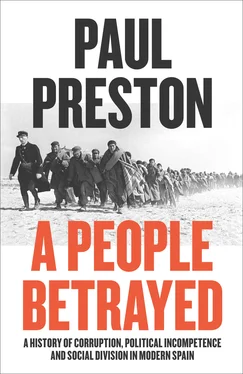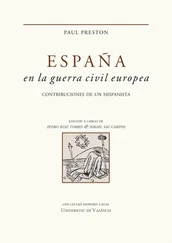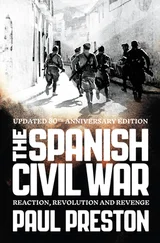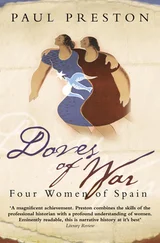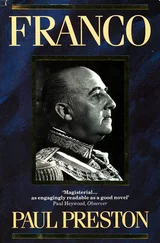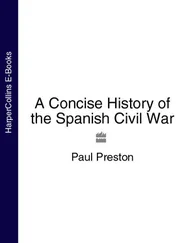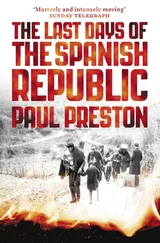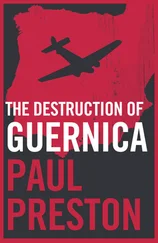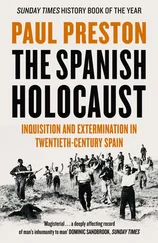In Britain, the image of an exotic, semi-oriental Spain of crumbling cathedrals and mosques, castles and bridges, inhabited by colourful, passionate and sensual people, drew on the exquisite paintings and drawings of David Roberts and John Frederick Lewis in the 1830s and of Charles Clifford in the 1850s. Many of their most characteristic works became immensely popular through collections of best-selling lithographs. Their views of Spain were confirmed by many Spanish painters of the romantic era, particularly Genaro Pérez de Villaamil, whose work was exhibited and published in Paris.11 Nothing symbolized the Spain of the romantic era more than Andalusian beauties and bandit-infested sierras. Foreign travellers returned home to dine out on stories of the risks they claimed that they had undergone.12 Virtually all travellers to Spain, whatever their nationality and whatever they thought of the sex, the bandits, the bulls and the Inquisition, complained about the rutted tracks which passed for roads. They often declared confidently that Spain would never be penetrated by railways.13 In fact, it was the introduction of railways from the late 1850s onwards that dramatically changed the stereotypes. As Spain enjoyed an extremely uneven industrial revolution, foreign investment increased. Thereafter, observers and travellers were concerned less with romantic stereotypes than with political instability, corruption and social violence.
In fact, the fundamentals of Spanish society had little to do with the steamy erotic stereotypes beloved of foreign travellers. The reality was altogether more mundane, its central characteristics the linked factors of social inequality and violence and political incompetence and corruption. In 1883, the Tribunal Supremo entitled part of its annual report on criminality ‘On the Violent Customs of the Spanish People’. It was symptomatic of Spain’s dysfunctional society that, between 1814 and 1981, there were more than fifty attempted pronunciamientos , or military coups of which only a handful succeeded.14 That crude statistic provides a graphic indication not just of the divorce between soldiers and civilians but of the extent to which the Spanish state did not adequately serve its citizens. A tradition of mutual misunderstanding and mistrust between the army and civil society developed to a point at which soldiers considered themselves more Spanish than civilians. The year 1833 saw the outbreak of the first of four civil wars with the battlefield hostilities of the last coming to a close in 1939. In fact, to some extent, the civil war of 1936–9 is the war that never ended. Indeed, in some respects, Spain still suffers today from some of the divisions of 1936.
The early 1830s experienced both the loss of the bulk of the once great Spanish empire and the beginning of dynastic conflict. The death in 1833 of Fernando VII, succeeded as queen by his infant daughter, Isabel, and the attempt by his brother Carlos to seize power provided the spark that ignited what came to be called the first Carlist War, which raged until 1840. Carlos sought support among deeply reactionary landowners and extreme ultramontane Catholics and was opposed by modernizing liberals led symbolically at least by Isabel’s mother, the Queen-Regent María Cristina. Carlist forces were commanded, even more symbolically, by the Vírgen de los Dolores, a commitment to theocracy that guaranteed the support of the Church hierarchy. A second, rather more sporadic, Carlist war was fought from 1846 to 1849 and a third from 1872 to 1876. The active role of the Catholic Church in these Carlist Wars, with some lower clergy even taking up arms, contributed to the subsequent popular perception of priests as deeply reactionary.15 In the 1860s, there had been fewer than 50,000 secular priests, monks and nuns in Spain. In the period between the monarchical Restoration of 1874 and the end of the century, the numbers would increase to more than 88,000. When the Primo de Rivera dictatorship fell in 1930, the clergy had swelled to over 135,000.16 In the view of the anarchists, the Catholic Church commercialized religion but did not practise morality. They saw it as a corrupt and rapacious institution which exploited the people and also blocked social progress.
Thus, even though black, reactionary Spain was startled by the French revolution and was shaken out of its lethargy by the Napoleonic invasion of 1808, many of the European stereotypes of Spain lamented by Juderías, certainly those based on the violence of its political life, were confirmed rather than shattered by the cycle of nineteenth-century civil wars. The notion that deep social and political problems could be resolved by violence was to afflict Spain well into the twentieth century. The Franco regime which followed the civil war was a regime built on terror, plunder and corruption. None of these elements was the invention of Franco. Indeed, it is the central thesis of this book that the violence, corruption and incompetence of the political class have betrayed the population at least since 1833 and almost certainly before. There are many possible historical reasons to do with religion and empire but perhaps the most potent and enduring has been the lack of a state apparatus popularly accepted as legitimate. After a state of near civil war between the death of Franco in 1975 and the military coup of 1981, it looked as if Spain was witnessing the creation of a legitimate state. The prosperity of the late twentieth century masked the extent to which the new polity was as mired in corruption and incompetence as its predecessors. An especially vibrant economic boom fuelled by the cheap credit facilitated by Spain joining the euro drew a veil over rampant corruption that reached as far as the royal family. The recession that followed saw the veil torn away, the political establishment lose legitimacy and problems such as regional nationalism divide the country in, rhetorically at least, violent terms.
In the nineteenth century, the Spanish state was weak in the face of geographic obstacles, poor communications and historical and linguistic traditions utterly opposed to a centralized state. Unlike, say, France or Italy after 1871, Spanish governments failed to create an all-embracing patriotism and sense of nationhood. In other countries, this task was largely assumed by the armed forces. However, in Spain, the army was an engine of division, above all because of the appalling conditions faced by conscripts in overseas wars. By the early twentieth century, army officers were ripe for persuasion by extreme conservatives that it was their right and duty to interfere in politics in order to ‘save Spain’. Unfortunately, that ostensibly noble objective actually meant the defence of the interests and privileges of relatively small segments of society. The armed forces were thus not the servants of the nation defending it from external enemies but the defenders of narrow social interests against their internal enemies, the working class and the regional nationalists. In the hundred years before 1930, it was possible to discern the gradual and immensely complex division of the country into two broadly antagonistic social blocs. Accordingly, popular hostility to the armed forces grew as deep-rooted social conflicts, at a time of imperial decline and military defeat, were repressed by the army. A further layer of the dialectic between violence and popular discontent was the way in which regional nationalism was crushed in the name of a patriotic centralism. Military resentments of politicians in general and of the left and the labour movement in particular were the other side of the same coin.
Ironically, it was in 1833 that the biggest step towards creating a state had been taken. This was the adoption of a highly centralized French territorial model with fifty broadly uniform provinces under the control of a civil governor appointed by Madrid. This systematized the distribution of patronage and therefore fostered corruption. Although the idea of Spain had long existed, the country seemed to be a flimsy collection of virtually independent provinces and regions whose languages and dialects were often mutually unintelligible. The 1833 definition of regions and provinces has subsequently been modified but, broadly speaking, it still holds good and can be recognized in the current system of so-called autonomies into which Spain is now divided. Similarly, further measures taken in the 1840s saw the beginnings of something resembling a central state with a crude and divisive taxation system and the creation of local and national police forces. However, with the exception of the Civil Guard, it was an inadequately implemented process. Taxation did not finance the state because wealth was not taxed, whereas consumption was. Ancient forms of politics, social influence and patronage, caciquismo or clientelism, took precedence over any kind of modern political machinery, poisoning what falteringly developed as electoral politics and leaving the state underfinanced and weak, other than in its coercive capacity.
Читать дальше
